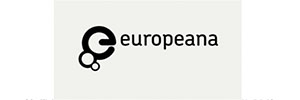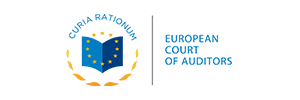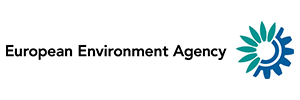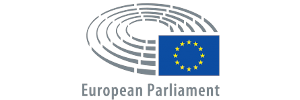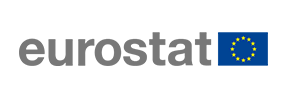WINNERS OF EU DATATHON 2022

The 6th edition of EU Datathon, the EU’s open data competition, came to a close on 20 October 2022. The finals took place in Brussels as part of the European Year of Youth and were streamed online to a world-wide audience. We are thrilled to announce the winners!
The teams were shortlisted from an initial 156 entries from 38 countries, the highest participation in the competition´s history, and competed in four categories, all highly relevant to the challenges Europe faces today: the European Green Deal, transparency in public procurement, EU public procurement opportunities for young people, and a Europe fit for the digital age.
Prior to the finals, the finalists had the opportunity to present their ideas for apps built on EU open data in a series of videos while, on the final day, they pitched their polished apps to the jury of 14 open data experts and the online audience.
Challenge 1:
A European Green Deal
Challenge 2:
Transparency in public procurement

1st place: Free Software Foundation Europe e.V.
Visualise the links between businesses, the public sector and individuals involved in the EU public procurement (Germany)
2nd place: The AI-Team
Trace the amounts and values of awarded contracts all the way to the company owners (Germany)
3rd place: EMMA
A prevention and early detection tool against fraud (France)
Challenge 3:
Public procurement opportunities for young people

1st place: Hermix
A tool for strategic marketing analysis of the business-to-government (B2G) market (Belgium, Romania)
2nd place: YouthPOP
Empowering young job seekers and young entrepreneurs to engage in public procurement processes (Greece)
3rd place: HasPopEU
Enhancing job and skill matching, with a focus on young people, migrants and small and medium-sized enterprises (Romania)
Challenge 4:
A Europe fit for the digital age

1st place: Lobium/Gavagai
Producing intelligence for journalists so they can scrutinise the legislative arenas in a better and faster manner (Netherlands, Sweden, United Kingdom)
2nd place: 100 Europeans
Big challenges translated into relatable stories in which Europe is a community of just 100 people (Greece)
3rd place: UNIOR NLP
Your guide to cultural content across Europe (Italy)
Agenda, 20 October 2022
| Opening | ||
|---|---|---|
| 10.00 |
 |
Welcome address Hilde Hardeman, Director-General, Publications Office of the European Union |
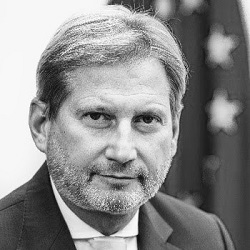 |
Opening speech Johannes Hahn, European Commissioner for Budget and Administration |
|
| Challenge 1: ‘A European Green Deal’ | ||
| 10.20 |
 |
Introductory talk Angela Morelli, InfoDesignLab |
| Finalists showcase their apps | ||
| Break | ||
| Challenge 2: ‘Transparency in public procurement’ | ||
| 11.10 |
 |
Introductory talk Reet Sommer, European Parliament, Data Management, Document Production |
| Finalists showcase their apps | ||
| Break | ||
| Challenge 3: ‘EU public procurement opportunities for young people’ | ||
| 12.50 |
 |
Introductory talk Manuela Cruz, Publications Office of the European Union, TED and EU Public Procurement |
| Finalists showcase their apps | ||
| Break | ||
| Challenge 4: ‘A Europe fit for the digital age’ | ||
| 13.40 |
 |
Introductory talk Thomas Gottron, European Central Bank, Principal Data Science expert |
| Finalists showcase their apps | ||
| Break | ||
| Awarding of prizes and public choice award | ||
| 14.45 |
 |
Guest speaker Stefaan Verhulst, The GovLab |
 |
Guest speaker Renata Avila, Open Knowledge Foundation |
|
 |
Awarding of prizes and the public choice award Hilde Hardeman, Director-General, Publications Office of the European Union |
|
Speakers

Renata Avila
Open Knowledge Foundation
CEO

Jennifer Baker
Moderator
EU tech policy reporter

Thomas Gottron
European Central Bank
Principal data science expert

Johannes Hahn
European Commission
Commissioner

Hilde Hardeman
Publications Office
Director-General

Angela Morelli
InfoDesignLab
CEO and co-founder

Reet Sommer
European Parliament
Head of unit

Stefaan Verhulst
GovLab
Co-founder and director
Jury members

Maria Abruzzo
Publications Office
Knowledge management

Alexandra Balahur
European Commission
Project officer

Maria Claudia Bodino
European Commission
Data scientist
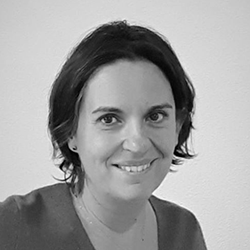
Nuria Cavalle
Publications Office
Knowledge management

Inma Farfán Velasco
Publications Office
Project officer

Nicolas Lieber
Publications Office
Project officer
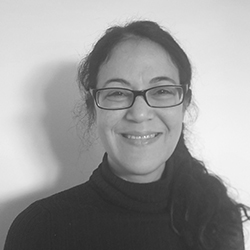
Hagar Lowenthal
Publications Office
Knowledge management

Per Nymand-Andersen
European Central Bank
Former adviser

Carlos Perez
Publications Office
External expert

Nataliya R. Jasinskaja
Publications Office
Knowledge management

Matthias Rumpf
European Central Bank
Communications expert

Anna Sabadash
European Commission
Statistical officer

Jef Vlegels
European Commission
Policy officer

Laura Zambelli
Publications Office
Information systems
Challenge 1:
A European Green Deal
TOP-3 FINALIST CROZ renEUwable team
Going green has never been easier
APP DESCRIPTION
RenEUwable combines environmental, social and economic data analysis to offer specific, personal recommendations for sustainable energy use.
More about the app in the interview with the team.

Darko Benšic

Marina Bednjanec

Petar Matic

Vinko Puškar
TOP-3 FINALIST Green Land Dashboard for cities
Measure your green well-being in the city
APP DESCRIPTION
Green Land Dashboard integrates open data with satellite imaging and the internet of things to support cities, regional governments and non-governmental organisations in analysing and visualising the evolution of green areas within their territories.
More about the app in the interview with the team.

Lorenzo Sanna

Andrea Cruciani
TOP-3 FINALIST MyBioEUBuddy
Your buddy to becoming a top organic producer
APP DESCRIPTION
My BioEUBuddy helps farmers and local governments find and follow the example of their ‘EU buddy region’ that is classified as a top organic producer.
More about the app in the interview with the team.

Tamara Mitrovic

Biljana Vujovic

Nikola Damjanovic
TOP-6 RUNNER-UP Climate X Mobility
Facing extreme weather: the why, how and when of citizens’ commuting behaviour
APP DESCRIPTION
Climate X Mobility integrates mobility, climate and social media data to understand citizens’ behaviour when commuting in extreme weather.
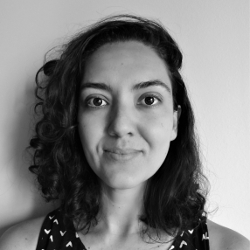
Raquel Cordeiro

Fabio Cordeiro
TOP-6 RUNNER-UP Endeema
The way for SMEs to save on electricity costs and reduce greenhouse gas emissions
APP DESCRIPTION
Endeema helps power-intensive manufacturing small and medium-sized enterprises (SMEs) change their production plan to save electricity costs, while reducing greenhouse gas emissions.
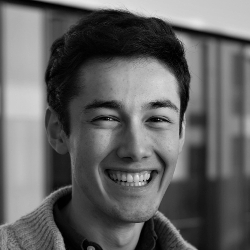
Joel Christoph

A.S. Ahmed Amin Haris
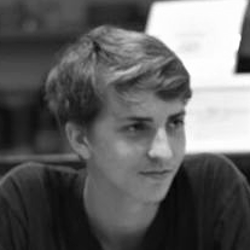
Niccolo Prada

Lucy Czachowski
TOP-6 RUNNER-UP FurCycle
Need a new sofa, chair or lamp? Replace old furniture in an eco-friendly and economic way
APP DESCRIPTION
FurCycle proposes a pocket- and eco-friendly alternative to acquiring stylish, practical and durable furniture.
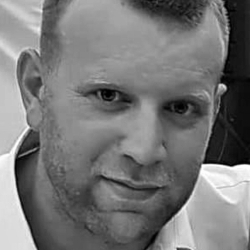
Dejan Simovic
Challenge 2:
Transparency in public procurement
TOP-3 FINALIST EMMA
Meet EMMA, the EU public procurement fraud detector
APP DESCRIPTION
‘Emma Monitors Malicious Activity’ is a prevention and early detection tool against fraud that enables public institutions, journalists and civil society to automatically control the relationshiip between parties in public procurement.
More about the app in the interview with the team.

Marc Fouqué
TOP-3 FINALIST Free Software Foundation Europe e.V
TEDective
APP DESCRIPTION
Free Software Foundation Europe e.V. visualises the links between businesses, the public sector and individuals involved in EU public procurement to increase transparency, traceability and predictability of the award process.
More about the app in the interview with the team.

Linus Sehn

Alexander Sander

Michael Weimann

Max Mehl
TOP-3 FINALIST The AI-Team
TEDgraph: untangling the web of business relationships
APP DESCRIPTION
The AI-Team proposes visualising TED data in a graph database and combining it with ownership information and a list of sanctioned entities to allow public officers and competing parties to trace the amounts and values of awarded contracts all the way to the company owners.
More about the app in the interview with the team.

Christian Spindler

Thomas Wurster
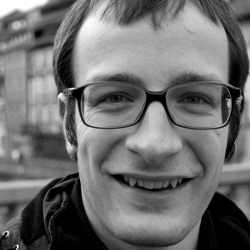
Stefan Fisches
TOP-6 RUNNER-UP Open Risk
Supporting sustainable practices on a procurement portfolio basis
APP DESCRIPTION
Open Risk combines data to attribute greenhouse gas emissions to procurement contracts, allowing procurement managers to better understand the environmental footprint of tenders.

Filippos Papadopoulos
TOP-6 RUNNER-UP Sampo
Who wins public procurement contracts, and why?
APP DESCRIPTION
Sampo combines the TED dataset with open local and national data to assist policymakers, journalists, researchers and tenderers in assessing the efficiency, impact and fairness of EU public procurement.

Heidi Vähätalo

Martti Ketola

Henri Vähätalo
TOP-6 RUNNER-UP TenderPriceBot
We will make you win this tender!
APP DESCRIPTION
TenderPriceBot combines historical TED data with artificial-intelligence-powered algorithms and semantic technologies to provide small and medium-sized enterprises in the IT, software and technology sectors with a tender alert and price-intelligence tool.

Timo Heikkinen

Hammad Hassan

Nam Nguyen

Anja Miscevic
Challenge 3:
EU public procurement opportunities for young people
TOP-3 FINALIST HasPopEU
Matching the right candidates and skills in EU public procurement
APP DESCRIPTION
HasPopEU leverages the open EU public procurement data and machine-learning techniques to enhance job and skill matching, with a focus on young people, migrants and small and medium-sized enterprises.
More about the app in the interview with the team.

Ion Marcu

Aiana Melnic

George Turcas

Razvan Ceana
TOP-3 FINALIST Hermix
Understanding, predicting and recommending the B2G market
APP DESCRIPTION
Hermix relies on big data analytics and artificial intelligence / natural language processing classification to build a tool for strategic marketing analysis of the business-to-government (B2G) market.
More about the app in the interview with the team.

Stefan Morcov
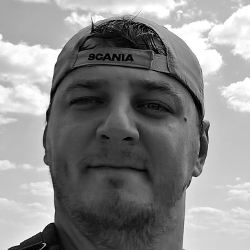
Bogdan Costea
TOP-3 FINALIST YouthPOP
Your public procurement opportunity just popped up!
APP DESCRIPTION
The YouthPOP (youth public open procurement) project combines historic TED data with machine-learning technology to develop an e-tool that empowers young job seekers and young entrepreneurs to engage in public procurement processes.
More about the app in the interview with the team.

Michail Maragkakis

Sofia Lousa

Konstantinos Maragkakis
TOP-6 RUNNER-UP AsturDataTeam
Hunting for opportunities in public procurement
APP DESCRIPTION
AsturDataTeam proposes a search engine for public tenders to easily connect providers and contracting authorities around Europe, levelling up the playing field for all.

Manuel García Rodríguez
TOP-6 RUNNER-UP RecommendTED
Never miss a tender opportunity
APP DESCRIPTION
RecommendTED proposes the most recent and relevant tenders to the user according to their personal profile and preferences, making the application process easier for non-specialists.

Maja Koprčina

Filip Koprčina
TOP-6 RUNNER-UP Tangible Data
Bringing data to life
APP DESCRIPTION
The Tangible Data project transforms relevant data into sculptures that generate impact and constitute a call to action.

Antonio Moneo
Challenge 4:
A Europe fit for the digital age
TOP-3 FINALIST 100 Europeans
Scrollytelling Europe’s biggest challenges
APP DESCRIPTION
100 Europeans raises awareness and sparks discussion around the big challenges of our time by breaking them down into relatable, interactive and visual stories in which Europe is a community of just 100 people.
More about the app in the interview with the team.

Dimitrios Michailidis

Ntenis Koullolli
TOP-3 FINALIST Lobium/Gavagai
Enhancing journalistic scrutiny with data-powered intelligence
APP DESCRIPTION
Lobium/Gavagai uses a mix of natural language processing techniques to produce intelligence for journalists so they can scrutinise the legislative arenas in a better and faster manner, particularly regarding the influence of stakeholders on EU-legislative proposals.
More about the app in the interview with the team.

Tim Werkhoven

Ivan Sukhletcov

Fredrik Olsson

Anyla Pula
TOP-3 FINALIST UNIOR NLP
Across Europe with Maggie: your guide to European culture
APP DESCRIPTION
Leveraging natural language processing techniques and the European data collection, UNIOR NLP creates a personal assistant named Maggie, who guides users to explore cultural content across Europe.
More about the app in the interview with the team.

Maria Pia di Buono

Gennaro Nolano

Giulia Speranza

Johanna Monti
TOP-6 RUNNER-UP Ajapaik
A photographic bridge between past and present
APP DESCRIPTION
Ajapaik is an app for harvesting contemporary repeat photos (rephotos) of historic sites and landmarks, with the aim of enriching both public collections of historic photographs and user experience in the context of travel, education and cultural discovery.

Vahur Puik

Kimmo Virtanen

Hembo Pagi
TOP-6 RUNNER-UP Data-Ray
Putting local legal acts on the map
APP DESCRIPTION
Data-Ray aims to present local legal acts on an interactive map, based on extracted address information, to better inform people about forthcoming changes that may impact the area in which they live.

Robert Kunicki
TOP-6 RUNNER-UP EURegMed
Improving medical care on a local level
APP DESCRIPTION
EU Regional Medicine offers a data-based tool for comparing regions to support health and social policymakers, regional authorities and also patient associations in their healthcare planning and exchange of best practices.

Boris Bikbov
News: 5 reasons to join
Every year, EU Datathon calls for innovators from around the world to come up with new ways of using open data to address important societal and environmental challenges, with the condition that they use at least one of the thousands of data sets published on data.europa.eu.
Over the five years of its existence, the competition has generated dozens of practical apps and propelled new start-up enterprises.
This year´s edition of EU Datathon is now open for submissions of ideas. Here are five reasons to join in.
- Get international visibility for your innovative ideas: EU Datathon and its finalists are promoted by the European Commission and its representations in the EU Member States and further afield. The teams selected for the finals will pitch their apps at a highly followed final event with strong international participation.
- Win your share of EUR 200.000: Money isn´t everything but it can help you build a start-up enterprise or materialise your other open data projects. This year, the finalists can win up to EUR 25 000 and the Public Choice Award.
- Make a difference: Unlock open data to tackle some of the top EU priorities. This year´s challenges feature: (1) The European Green Deal; (2) Transparency in public procurement; (3) EU public procurement opportunities for young people; (4) A Europe fit for the digital age. Your success in addressing these challenges will be a success for all! To jog your inspiration, see the winning apps of the previous editions.
- Expand your professional network: EU Datathon finalist teams never walk alone; they get support during the design phase of their applications and an opportunity to meet other open data experts.
- Combine business with pleasure: EU Datathon opens doors to creativity. Use your skills to transform raw data into tools of business, education, entertainment and a lot more.
To join EU Datathon 2022, submit your idea for an open data app by 31 March.
In a nutshell
What is it about?
This year's edition of EU Datathon, the annual open data competition, was launched on 7 February 2022. This brings a chance for open data enthusiasts and application developers from around the world to demonstrate the potential of open data, get international visibility for their innovative ideas and compete for their share of the total prize fund of EUR 200 000 and the Public Choice Award.
How can you participate? It's simple! Propose an idea for an application that links and uses open datasets to address one of the four challenges.

What are the challenges?
- Challenge 1: ‘The European Green Deal’
- Challenge 2: ‘Transparency in public procurement’
- Challenge 3: ‘EU public procurement opportunities for young people’
- Challenge 4: ‘A Europe fit for the digital age’
The key condition for a successful submission is that at least one of the datasets used to develop your application comes from the thousands of datasets made available on data.europa.eu. If you opt for challenges 2 or 3, make sure to use at least one dataset published by the EU Tenders Electronic Daily (TED).
On top of that, your application is expected to make an innovative contribution to important goals of the European Union, and showcase opportunities for concrete business models or social enterprises. To jog your imagination, explore the winning ideas from the previous editions of the competition. In 2020, team FinLine from the United Kingdom impressed both the jury and the public with an application designed to provide small and medium-sized businesses with free customised advice for suitable grants and investment options to overcome difficulties caused by the COVID-19 pandemic. The application scooped the first place in its challenge, ‘An economy that works for people’, and also won the Public Choice Award. In 2021, the team of ITER IDEA from Italy repeated the same double success with an application facilitating women´s professional mobility in Europe. For details about all winning ideas, visit the EU Datathon website.
The teams shortlisted for this year´s final will receive an offer of support during the design phase and after the competition. The cooperation with the finalists includes invitations to open data events and webinars where the teams can meet data providers, get additional publicity for their projects and network.
Submit your idea by 31 March 2022. For detailed information, see the rules of the competition.
What are the prizes?
This is your chance to demonstrate the potential that open data presents in today’s society and, of course, your creativity and talent. It is also your chance to claim your share of the total prize fund amounting to EUR 200 000.
Twenty-four teams, six teams per challenge, will be pre-selected. If you are among them, you will be invited to further work on your idea and present a full proposal by 26 June 2022. The jury will evaluate the proposals and select twelve finalist teams, three teams per challenge. If you are among them, you will be invited to develop your application and present it at the final event on 20 October 2022. If you are not, you will receive a EUR 1 000 consolation prize.
The final ranking of the winning teams for each challenge will be decided at this event and the teams will be awarded the following prizes for each of the challenges:
- First place: EUR 25 000
- Second place: EUR 15 000
- Third place: EUR 7 000
EU Datathon 2022 is organised by the Publications Office of the European Union and contributes to the European Year of Youth 2022 which features events and activities dedicated to young people all around Europe.
Discover the webinars
Learn more about the challenges in the preparatory webinars:
- Webinar: TED in a nutshell, Friday, 18 February 2022, 10.00-10.30 CET. Download the presentation here.
- Webinar: Finding data on data.europa.eu, Friday, 25 February 2022, 15.00-15.30 CET. Download the presentation here.
- Webinar: Your key to European statistics, Thursday, 17 March 2022, 10.00-10.30 CET. Explore their data browser here.
- Webinar: Tour of the Urban Atlas, Friday, 18 March 2022, 14.00-14.30 CET. Download the presentation here.
- Webinar: A peek into the ECB data warehouse, Friday, 25 March 2022, 16.00-16.30 CET. Download the presentation here.

Webinars
Webinar 1
Webinar 2
Webinar 3
Webinar 4
Webinar 5
Testimonials
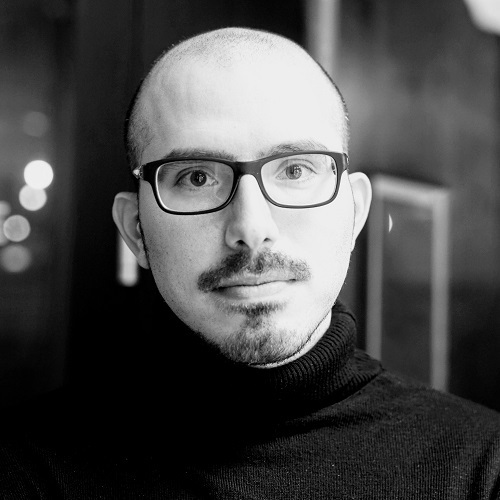
EU Datathon was a unique opportunity to showcase what the endless amount of possibilities are when you combine European open datasets with innovative, young and entrepreneurial spirits.
Vasileios Bouzas
geoFluxus
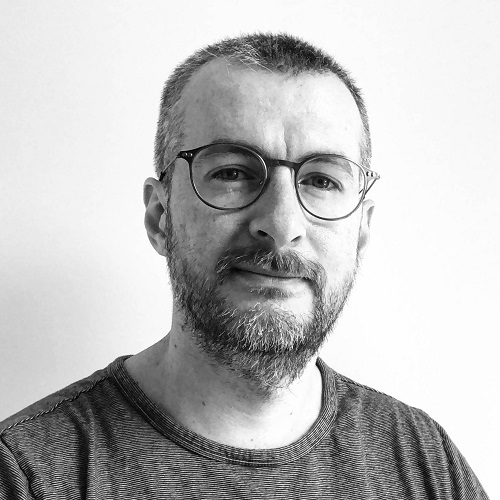
Regardless of who gets what prizes, we're all winners, it's been real fun to be part of this.
Giuseppe Sollazzo
EU-Twinnings
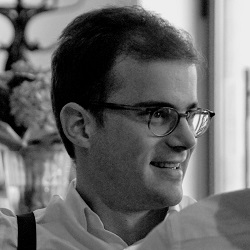
It was our first prize and we needed this visibility as a new company.
Andreas Thanopoulos
C4P.io
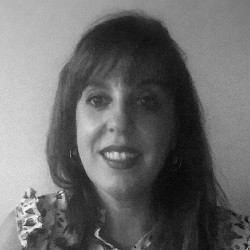
EU Datathon gave me strength to go even further.
Teresa Barrueco
EURI Trends
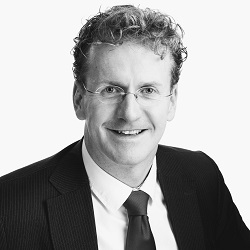
Companies here have shown massive creativity fueled by open data. Now public administrations need to step up to the plate and open up even more.
Dinand Tinholt
Capgemini Invent
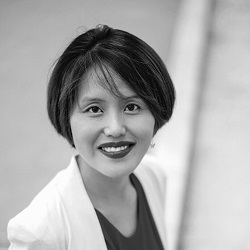
We were very happy to see all the participants with their nice ideas and implementation.
Miwon Seo
Medicatio
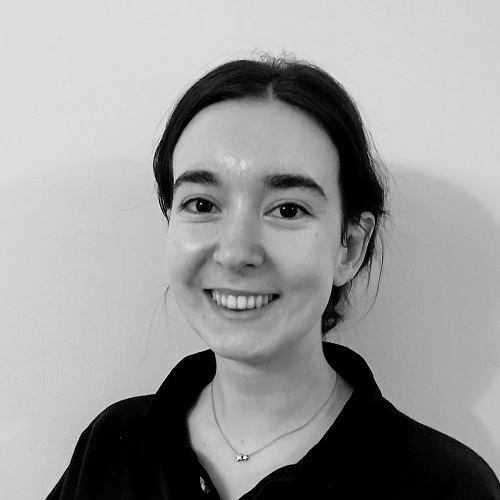
EU Datathon was a real challenge, but it made us work harder to achieve our goals. Being selected as a finalist was an honor and offered us a lot of visibility.
Paula Sans
Dataseeds
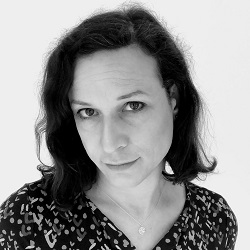
With such diversity of ideas on how to make use of EU data, it was a difficult challenge to judge, but inspiring to see the potential there is for adding value to this data!
Tess Bending
European Investment Bank

EU Datathon was a great learning experience for our organisation and winning our category has provided us with a solid basis for taking data, analytics and AI for democracy to the next level.
Michael Jensen
Next Generation Democracy

Participating in the EU Datathon was a wonderful challenge and lots of fun. It turned out to be much more valuable than I could ever had imagined.
Flemming Madsen
Tenderlake
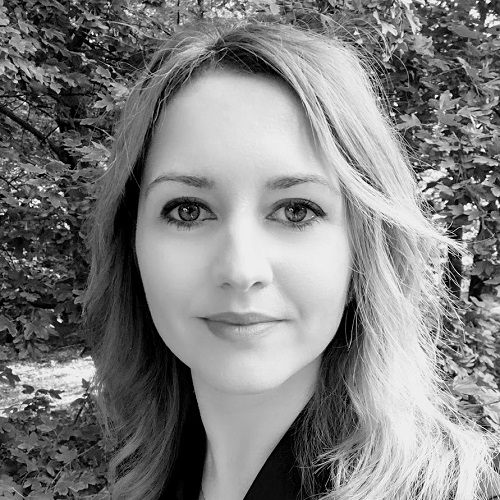
This was a great journey and opportunity. Ideas count, having the chance to implement them make the difference!
Brunilda Cullhaj
Elaboro

It was challenging and inspirational at many levels. Without the platform my innovation would have never become a reality.
Ronnie Das
Team Finline

EU Datathon has been amazing and interesting with tangible proposals.
Cesare Mazza
European Food Safety Authority
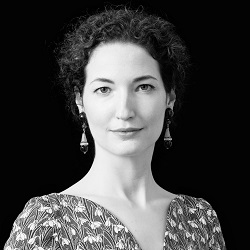
EU Datathon changed our perspective on open data and opened up new areas of business for us – the whole experience was phenomenal!
Veronika Haberler
The Smartfiles Network
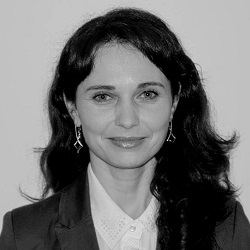
We can also draw conclusions about the data we publish, its quality and documentation.
Agnieszka Zając
Publications Office of the EU
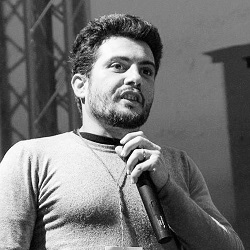
We were here to create a new network to enlarge our business vision.
Francesco Lo Truglio
Coffice
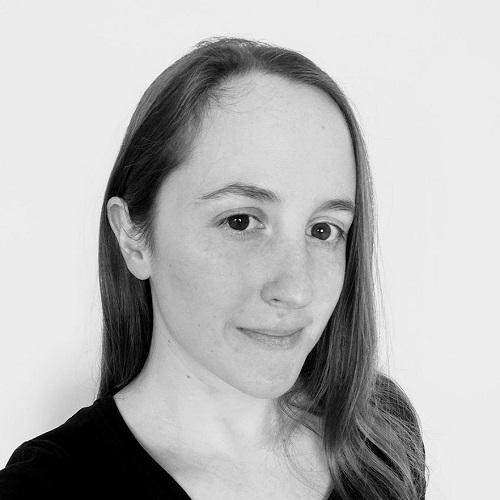
It's been a great experience that allowed us to further explore the potential of open data and see the creative ideas developed by all finalist groups.
Chiara Girardelli
EU Integrity Watch
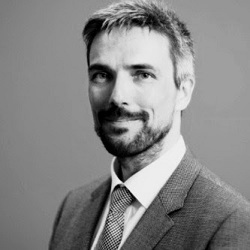
EU Datathon is a great showcase, giving start-ups and established companies a platform to show what is possible with existing EU datasets. Curious what the next edition will bring.
Andreas Belschner
Salesforce

Besides the opportunity to meet new people and have great feedback on your work, we valued EU Datathon as a great way to be introduced to new ideas and different implementation approaches.
Loana Elisabeta Maier
2 Think
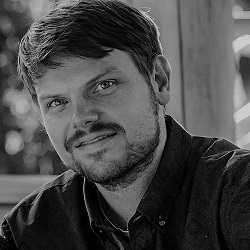
Participating in the EU Datathon was perfect for making Lexparency known and receiving recognition from a respected jury. I still draw on that today.
Martin Heimsoth
Lexparency

I am impressed by the time-to-market of these bright youngsters to create new digital data services bringing insights by combining open data sources.
Per Nymand-Andersen
European Central Bank

A great opportunity to develop ideas into a concrete product and to get valuable feedback!
Ida Peltonen
Investment Info
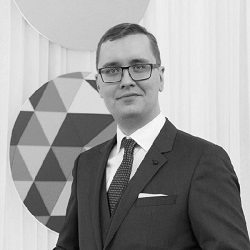
The apps contribute greatly to the business environment and transparency.
Margus Mägi
Human Dynamics
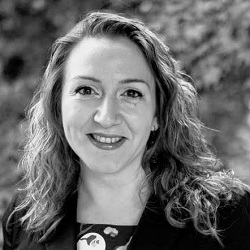
EU Datathon is a truly inspiring event, bridging the wealth of data of EU institutions with highly skilled, knowledgeable, creative and enthusiastic teams all over Europe.
Alexandra Balahur
Joint Research Centre of the European Commission

It gave an opportunity to demonstrate what we can achieve with open data. The superb experience is still fresh and is unforgettable.
Anoop Kumar
PublicBI

The EU Datathon showed me the importance of giving back data to public.
Karina Krampf
LightOnEurope

EU Datathon shows EU’s commitment to open data as a way to improve the daily lives of Europeans.
Pierre Slamich
Open Food Facts
Rules
OUTLINE
What is EU Datathon?
The sixth edition of the EU Datathon annual open data competition aims to prove the value of open data and to highlight opportunities for business models using EU institutions and national open data. Participating teams are required to develop mobile or web applications by using open datasets published by EU institutions and/or EU Member States. The EU needs the vision, engagement, and participation of all young people to build a better future that is greener, more inclusive, and digital. Data is at the heart of designing the necessary changes and EU should give incentives to younger generations to use EU data for more innovation in Europe, which is much needed for driving these changes. The EU Datathon is a key EU initiative aiming at creating new value for citizens through innovation and promoting the use of open data produced by the EU institutions. Thus, it can be a major forum for young data talents to display their ideas for shaping the future of the European Union.
EU Datathon not only gives the opportunity to people to highlight their talent and network, but also offers prizes worth EUR 200 000 in four different challenges thereby helping them to set the foundation of a start-up or boost an existing one.
The competition promotes open data as a free resource available to the wider public (not only participants) and to young people who can use it as a basis for an entrepreneurial venture.
The competition is organised by the Publications Office of the European Union.
PARTICIPATION
The rules are based on the Articles 206 and 207 of the financial regulation. The competition will respect the principles of transparency and equal treatment.
- The competition is open worldwide to anyone who is interested in creating a for-profit or non-profit (social) business model through data exploration and/or in creating open data prototype products based on open and public data.
- A team can be composed of one or more individuals (up to 4), one or more companies (up to 4) or one or more other legal entities (up to 4).
- The competition is not open to staff working in the EU institutions, agencies, bodies, partnering organisations or contractors of the Publications Office.
- Teams can be composed of persons under the age of 18. If that is the case, a written consent of the parents is required.
CHALLENGES
The competition consists of four challenges. Each challenge is organised as a separate competition of equal importance (separate registration, pre-selection, selection, finalist teams, pitches, and prizes). Teams may participate in any or all of the following challenges.
Challenge 1: ‘A European Green Deal’
- Develop an app that could be used to create a greener world, to boost efficient use of resources or to restore biodiversity and reduce pollution.
- Combine at least one dataset from data.europa.eu with any other publicly available dataset(s).
Challenge 2: ‘Transparency in public procurement’
- A significant amount of public investment is spent through public procurement. Transparency in public procurement helps track how public money is spent, combat fraud and analyse economic and market trends. We invite developers to explore the mass of information available and develop an app to expose it in a transparent manner.
- Combine the TED dataset (available via http or ftp protocol) with any other publicly available dataset(s).
Challenge 3: ‘EU public procurement opportunities for young people’
- Public procurement is often perceived as a complex field, where only specialists are at ease in finding the information they need. We invite developers to propose an app that helps young people in supporting their personal, social, and professional development.
- Combine the TED dataset (available via http or ftp protocol) with any other publicly available dataset(s).
Challenge 4: ‘A Europe fit for the digital age’
- This is an open challenge. Develop a value-creating app for the digital age in any field that is not already covered by the previous challenges.
- Combine at least one dataset from data.europa.eu with any other publicly available dataset(s).
TIMELINE
Milestones |
Deadlines |
|
7 February |
Competition launch The rules of competition are published on the EU Datathon website. |
|
Submit your idea Participating teams enter the competition by filling the online form, where they outline their idea: short description of the proposed solution, target audience, EU open datasets to be used, etc. |
31 March by 23:59 CET |
|
25 April |
Pre-selection results announced Pre-selection phase is concluded and all participating teams are notified. The pre-selected teams (6 per challenge) are announced on the EU Datathon website, start developing their idea into an app and preparing their full proposal for the next phase. |
|
|
Submit your full proposal The pre-selected teams submit their full proposals via email. Full proposal is a more detailed description of the idea originally submitted: it is a 10-slide deck presenting the features and datasets of the app, including mock-ups and/or a potential prototype. |
26 June by 23:59 CEST |
15 July |
Selection results announced Selection phase is concluded and all participating teams are notified via email. The finalist teams (3 per challenge) are announced on the EU Datathon website, invited to further develop their app further and to present it in the competition finals. |
|
Submit your video teaser The finalist teams submit their video teasers via email. Video teaser is a 60-second video produced by the finalist team, which presents the app and the team working on it. |
15 August |
|
The final stretch The finalist teams submit their apps and the supporting presentation slides, and are invited to rehearsals to practice the delivery of their pitch. |
The week leading |
|
20 October |
Competition finals The finalist teams deliver their pitch, followed by a Q&A session. The apps are ranked, and the winning teams announced. |
EVALUATION
Phase 1 — Pre-selection
Pre-selection takes place after the closing date for submitting ideas to enter the competition.
During this phase, an internal jury assesses each submitted idea against the pre-selection criteria (table below) and grades all competing teams. For each challenge, the six teams having scored the highest number of points (top-6 per challenge) are pre-selected.
Pre-selection criteria |
Maximum number of points |
Relevance to the selected challenge |
25 |
Relevance to a specific problem or need |
25 |
Relevance of proposed data sources |
25 |
Potential and creativity of the proposed solution |
25 |
All participating teams will be notified via email about the pre-selection results of the challenge(s) they compete in.
The pre-selected teams (top-6 per challenge) which will be announced on the EU Datathon website will be invited to start developing their idea into an app.
Phase 2 — Selection
Selection takes place after the closing date for submitting the full proposals.
In this phase, there are four juries per challenge, each assessing the full proposals submitted for the respective challenge. The juries may comprise experts, both internal and external to the EU institutions and agencies. The evaluation criteria and grading are the same as in the previous phase, but upon request, teams may also need to provide further information or clarifications about their proposal for the evaluation.
For each challenge, the three teams having scored the highest number of points (top-3 per challenge) will be selected.
Selection criteria |
Maximum number of points |
Relevance to the selected challenge |
25 |
Relevance to a specific problem or need |
25 |
Relevance of proposed data sources |
25 |
Potential and creativity of the proposed solution |
25 |
All participating teams will be notified via email about the selection results of the challenge(s) they compete in.
The finalist teams (top-3 per challenge) which will be announced on the EU Datathon website will be invited to develop further their proposal into an app and compete in the final phase.
The remaining three teams will receive for their efforts a consolation prize of EUR 1 000 each. The Publications Office reserves the right not to award the prize to the team(s) which would be assessed to have failed to provide the requested deliverables and/or have failed to demonstrate that sufficient effort had been made for this phase of the competition.
Phase 3 — Competition finals
The final evaluation of the selected apps takes place during the competition finals, which will be an online event. If circumstances allow, a different setup for the final event may be chosen.
On the day of the competition finals, the finalist teams (top-3 per challenge) present their developed apps. Each pitch is supported with a slide-deck presentation and followed by a Q&A session.
A dedicated jury per challenge, consisting of at least five experts from within and outside the EU institutions and agencies, evaluates the presented apps of the challenge and ranks them against one another with the final award criteria in mind. The team with the best ranking across the jury members will win the challenge.
Final award criteria |
Relevance · Relevance to the selected challenge · Relevance to a specific economic and social problem or need · Relevance of the proposed data sources |
Open data reuse · Creativity and innovativeness of the proposed solution (the Wow-effect) · Interoperability with other data sources (linking potential) · Visualisation(s) created |
Fitness for purpose · Problem definition and proposed solution clearly identified · Maturity of the proposed solution (readiness of the application and usability) · Impact of the proposed solution on the economy and/or everyday life |
All finalist teams (top-3 per challenge) are required to submit a feedback report: fill-in a survey about their work on reusing EU open data and provide a follow-up of their apps. This survey is a prerequisite for the payment of the prizes.
PRIZES
The prizes are funded by the Digital Europe Programme and the European Parliament Preparatory Action on Transparency in Public Procurement.
The total award fund for the competition amounts to EUR 200 000 (EUR 50 000 for each challenge) and will be split in the following order for each challenge. The pre-selected teams that did not make it to the finals will receive EUR 1 000 each according to the provisions for the phase 2 (above).
Place |
Award |
1 |
EUR 25 000 |
2 |
EUR 15 000 |
3 |
EUR 7 000 |
4-6 (not admitted to the finals) |
EUR 1 000 each |
TIPS
- Choose a short, meaningful, and catchy name for your team.
- The organisers can support participants in choosing the right challenge.
- Consider creating a Twitter account for your team.
- For the teasers, a briefing note with more info will be provided to the selected teams. Images and footage from early stages, such as team building or brainstorming can be of excellent value for your team’s teaser.
- Check out the finals of previous editions, teasers, and testimonials on YouTube to be inspired.
- Take harmonised, high-quality photos of your team members for the website.
- The organisers can help you find the right challenge for your idea if you are unsure.
ANNEX
Clarifications
Participants may request any clarification up to five (5) working days before the closing date for submitting proposals. Requests for clarification should be submitted in writing to the following email address: op-datathon@publications.europa.eu.
Payment of awards
The payments of awards are subject to the registration of the winners in the legal entity form and bank account file database of the European Commission. For this purpose, teams are required to provide, at the latest three weeks after having been pre-selected, all the necessary supporting documents, duly signed and stamped as necessary. The team must also decide to whom the prize money shall be transferred. Additional information as well as the templates for the creation of legal entity and bank account forms can be downloaded here. The Publications Office and its partners take no responsibility regarding the distribution of the awards within the teams. Finalist teams which do not deliver the full proposal and/or the developed application, will not be entitled to continue participating in the competition finals. Thus, they cannot claim any prize award.
Cancellation of the competition
The Publications Office reserves the right to cancel the competition before the competition finals without any obligation to indemnify the teams.
Intellectual property and copyright
In case teams use pre-existing material (such as open source) for their applications, they must guarantee that they have obtained all the necessary authorisations for such material to be used according to the rules described above. The one-page proposal submitted for the pre-selection will remain the property of the teams (authors) and will not be made public (or disclosed), but will be accessible to the jury. The final products delivered for the final selection will remain the property of the authors but will be accessible to the jury and to all teams at the competition finals. The EU institutions, agencies and bodies will be allowed to mention, describe, and promote on their channels (websites, social media, press releases, etc.) the winning applications with due reference to the authors without any further compensation.
Publicity
The winning applications may be featured in the ‘Use cases’ section on data.europa.eu. Where appropriate, the name and copyright of the authors will be mentioned.
Processing of personal data
All personal data contained in the entry shall be processed in accordance with Regulation (EU) 2018/1725 of the European Parliament and of the Council of 23 October 2018 on the protection of natural persons regarding the processing of personal data by the Union institutions, bodies, offices, and agencies and on the free movement of such data, and repealing Regulation (EC) No 45/2001 and Decision No 1247/2002/EC (OJ L 295, 21.11.2018, p. 39). Such data shall be processed by the Publications Office solely in connection with the implementation and follow-up of the entry of the winner, without prejudice to a transmission to the bodies in charge of a monitoring or inspection task in accordance with European Union legislation.
Teams may, upon written request, gain access to their personal data and correct any information that is inaccurate or incomplete. They should address any questions regarding the processing of their personal data to the Publications Office via the contact e-mail announced in the rules of the competition. The teams may, at any time, lodge a complaint against the processing of their personal data with the European Data Protection Supervisor. On the competition website the Publications Office will publish the name of the winning teams and of their members, their locality, the prize amount and the nature and purpose of their applications. Participants may request that the Publications Office waive such a publication if disclosure risks threatening their security and safety or if it could harm their commercial interest.
Sole liability of the teams
Neither the Publications Office nor the partners may be held responsible for any claim relating to the activities carried out by teams in the framework of the competition. Neither the Publications Office nor the partners shall be held liable for any damages caused or sustained by any of the teams, including any damages caused to third parties because of or during the implementation of the activities related to the competition.
Applicable law and competent jurisdiction
By submitting the project description teams declare that they are not in one of the situations mentioned in Article 136(1) of the Financial Regulation. Teams who are in any of those situations or fall into other categories indicated in Article 141 of the Financial Regulation shall be rejected from participating and from being awarded a prize under the present competition. The rejection shall be without prejudice to the decision of exclusion from participating in award procedures governed by the Financial Regulation and application of financial penalties (Articles 136-140 of the Financial Regulation).
Exclusion criteria and administrative sanctions
By submitting the project description teams declare that they are not in one of the situations mentioned in Article 136(1) of the Financial Regulation. Teams who are in any of those situations or fall into other categories indicated in Article 141 of the Financial Regulation shall be rejected from participating and from being awarded a prize under the present competition. The rejection shall be without prejudice to the decision of exclusion from participating in award procedures governed by the Financial Regulation and application of financial penalties (Articles 136-140 of the Financial Regulation).
Early Detection and Exclusion System
In case the participants are in one of the exclusion situations as stated above, personal data on them may be registered in the Early Detection and Exclusion System (EDES) in line with the Articles 135, 142, 143 and 144 of the Financial Regulation. For more information, see the privacy statement for EDES.
Suspension of the competition, cancellation of the award and reduction of prize
Where the award procedure has been subject to irregularities or fraud, the Publications Office applies the measures referred to in Article 131 of the Financial Regulation.
Checks, audits, and investigations
The winning teams accept checks, audits and investigations by the European Commission, the European Anti-Fraud Office, the Court of Auditors, and the European Public Prosecutor’s Office in relation to the competition and the prize received.
Promotion material
VISUALS - COMPETITION
For editable visuals, contact us.
 |
||
 |
||
 |
||
 |
||
 |
||
 |
||
 |
||
 |
||
 |
||
 |
||
 |
||
 |
||
 |
||
 |
||
 |
||
 |
||
 |
||
 |
||
 |
||
 |
||
 |
||
 |
||
 |
VISUALS - TEAMS
 |
||
 |
||
 |
||
 |
||
 |
||
 |
||
 |
||
 |
||
 |
||
 |
||
 |
||
 |
||
 |
||
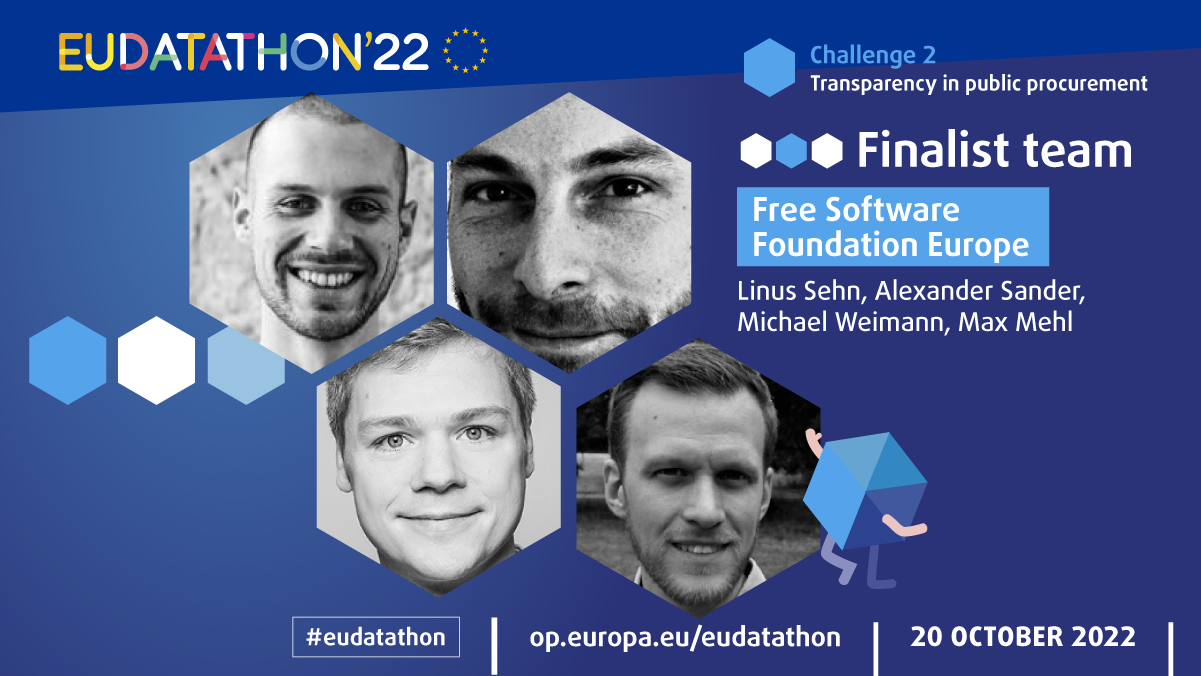 |
||
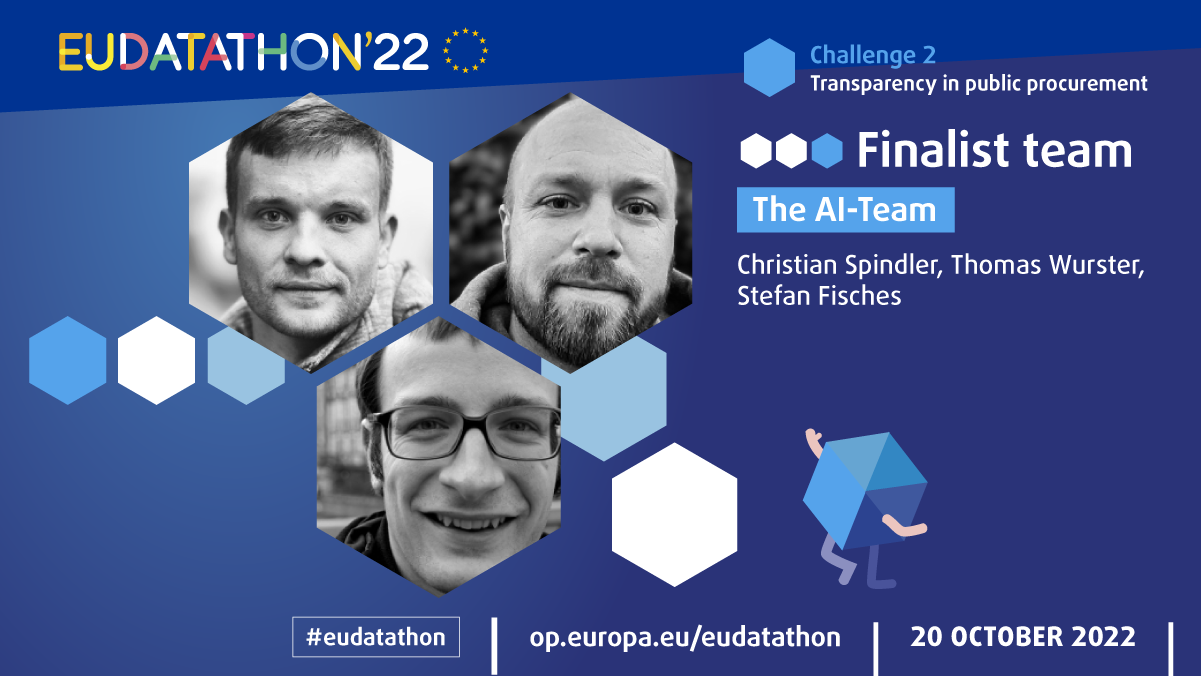 |
||
 |
||
 |
||
 |
||
 |
||
 |
||
 |
||
 |
||
 |
||
 |
||
 |
||
 |
||
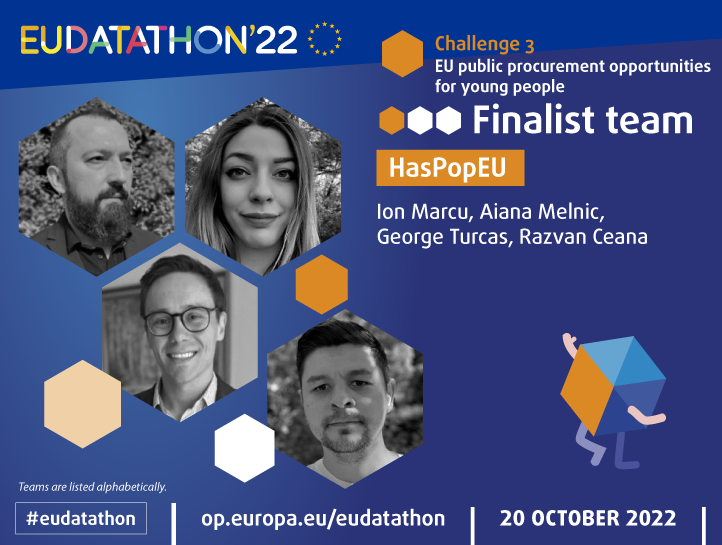 |
||
 |
||
 |
||
 |
||
 |
||
 |
||
 |
||
 |
||
 |
||
 |
||
 |
||
 |
||
 |
||
 |
||
 |
||
 |
||
 |
||
 |
||
 |
||
 |
||
 |
||
 |
||
 |
||
 |
||
 |
||
 |
||
 |
||
 |
||
 |
||
 |
||
 |
||
 |
||
 |
||
 |
||
 |
||
 |
||
 |
||
 |
||
 |
||
 |
||
 |
||
 |
||
 |
||
 |
||
 |
DOCUMENTS
Any questions?
Privacy Statement
Stay informed







